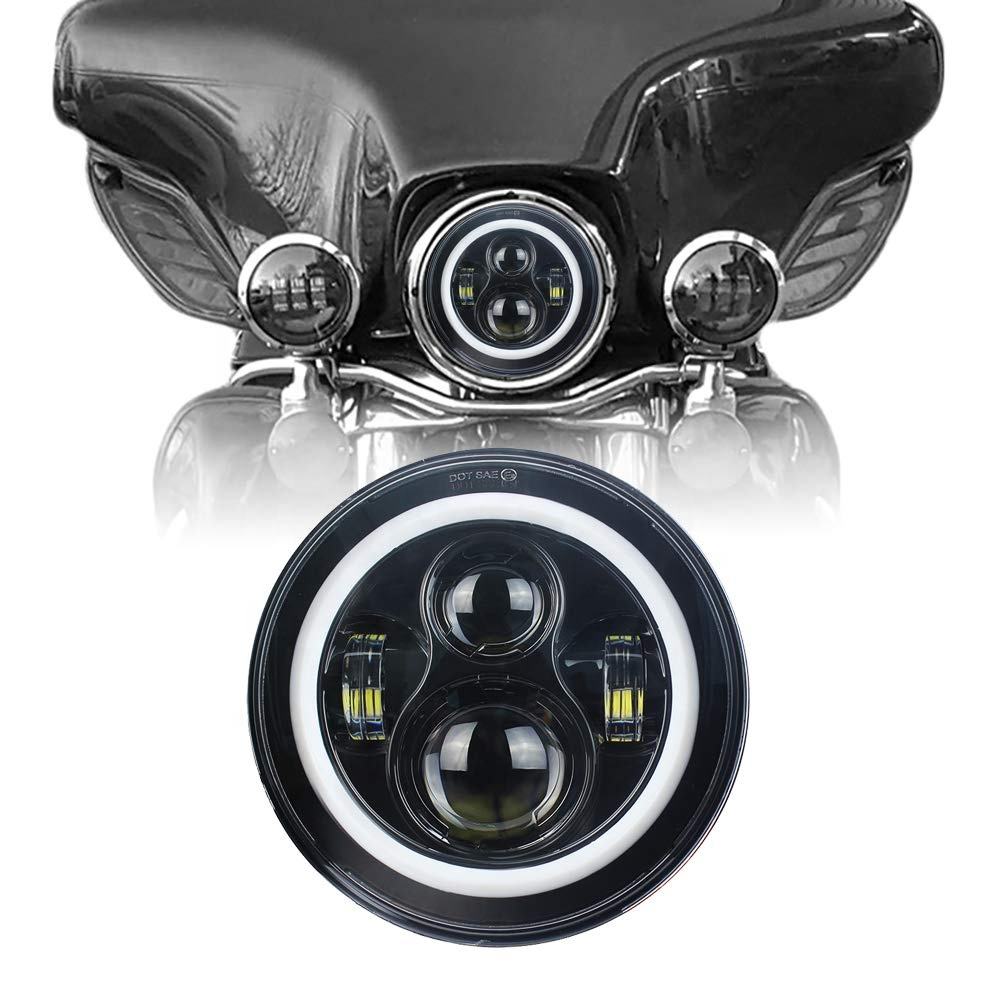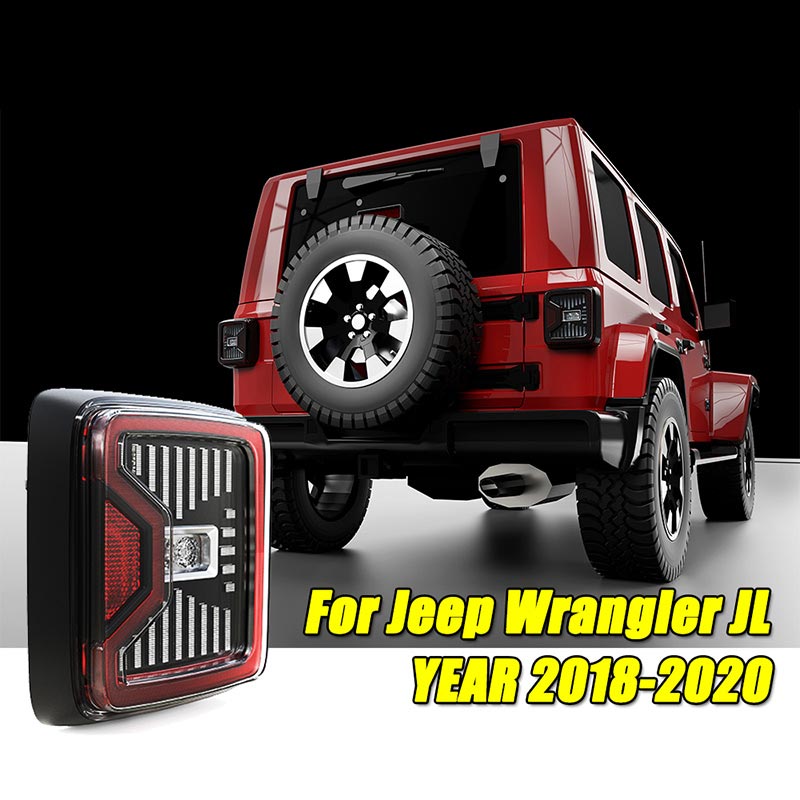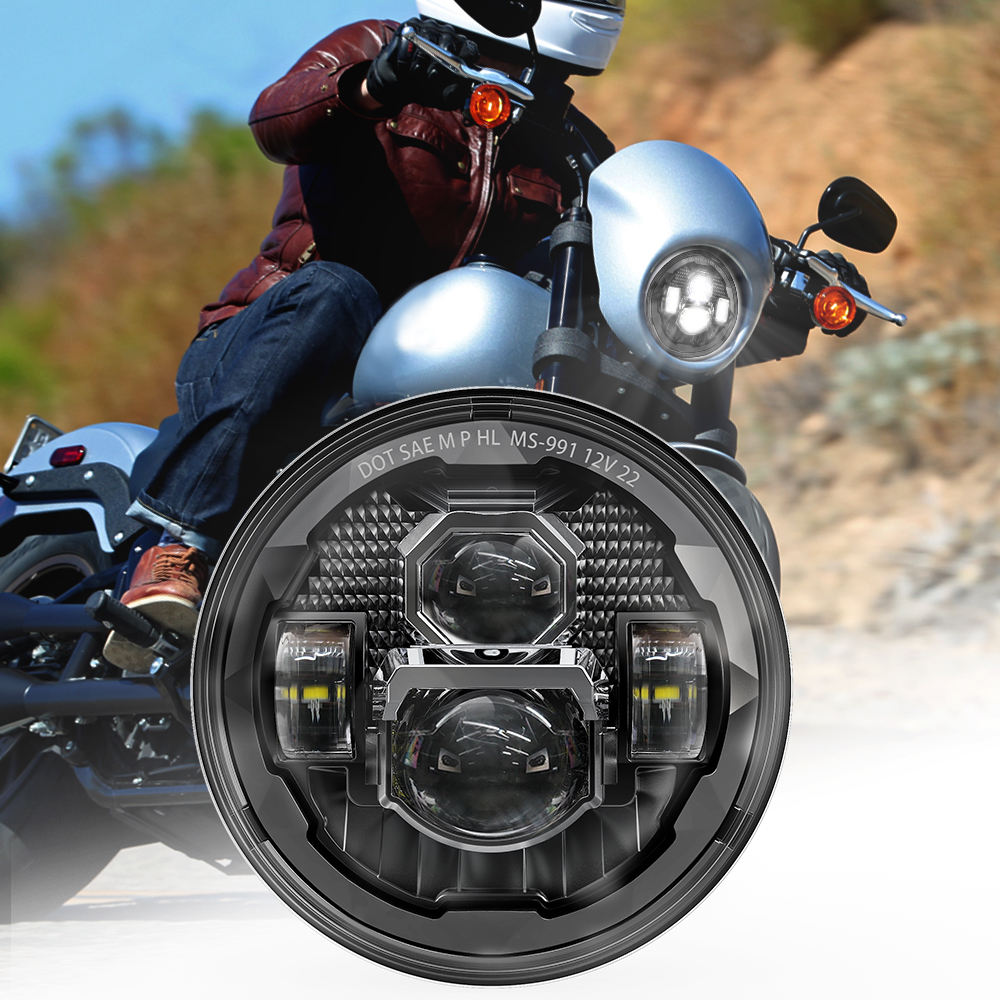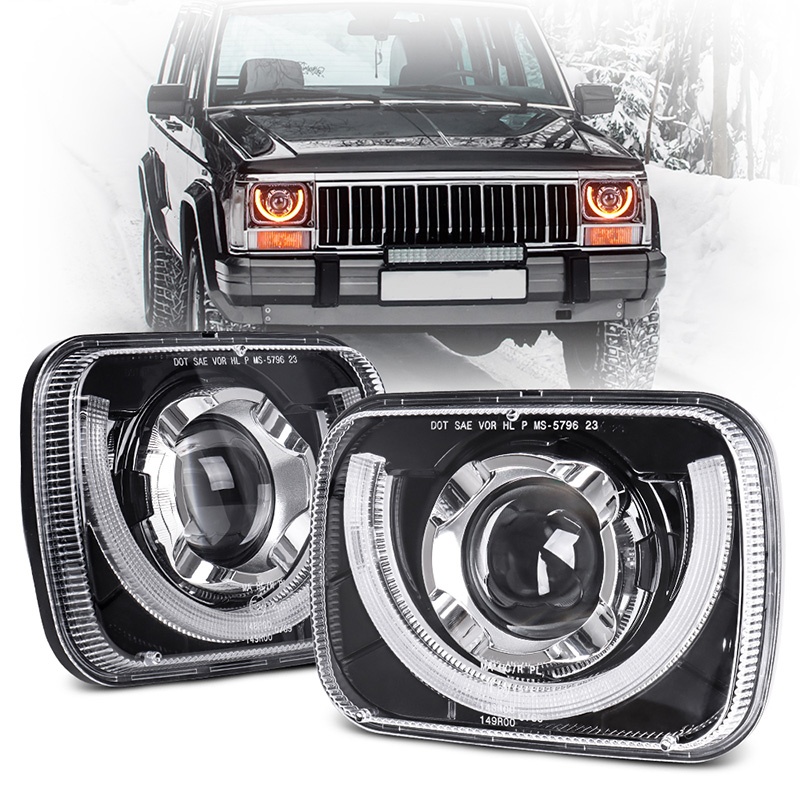The mere fact of qualifying a car as historic means giving it a unique role. On this occasion, the recognition is due not only to the most obvious achievements, but also to having shown a remarkable ability to adapt to the environment, which is none other than the historical context in which he lived.
The Camaro was originally intended to be a muscle car, but the consecutive oil shocks of the 1970s forced this breed of vehicle to reconvert and adapt. In the United States of the early 1980s fuel waste was a national offense to the state. The regulations affect the maximum consumption, severely penalizing the offense of non-compliance. Fuel prices not only do not relax, but they reach a ceiling in the middle of the decade. For this old version, we can offer the
Third Gen Camaro Halo Headlights aftermarket replacement with a low price.
To this, the technological advance of Japan, begins to see its effects in its application to the Japanese automotive industry, which seems to be more prepared to face the new demands of the sector, accentuated by the crisis.
Third generation 1982-1992
Obviously in Detroit they take measures to try to reconvert this deficiency and in 1982 Chevrolet makes the third generation of the Camaro available to its customers.
1982 Chevrolet Camaro Z28
The first thing that stands out with respect to its predecessor is that it is 230kg lighter than the 1981 model. Any aspect that benefits performance must be taken into consideration and the first thing, as in any emergency situation, is to release ballast.
The third generation, however, continued to use the F-Body platform that the 1968 Camaro debuted. The design therefore did not differ in the essentials, although now the exterior takes a more angular style. As with weight, its dimensions are slightly reduced in length and height. It also receives an aerodynamic package and a panoramic glass roof that presided over the also renewed interior. The styling of the new Camaro was more dynamic and to emphasize this aspect it left behind the hitherto common leaf suspension to be replaced by coil springs at the rear and McPherson shock absorbers at the front. Consistency was provided by a torque arm that linked transmission with differential.
Chevrolet Camaro Z28 T-Top ‘1982–84
The next term after "efficiency" is "optimization." With it, electronics takes center stage trying to minimize the impact that new laws have on car consumption.
The move to fuel injection
In this way, the new model has for the first time propellants equipped with fuel injection.
It was put on sale in the Sport Coupé, Berlinetta and Z28 versions, with the option of choosing it in coupe-hatchback or T-Top bodywork. The basic Sport featured a small 2.5-liter in-line 4-cylinder that introduced fuel injection to the range. This Camaro took the name of its GM engine to be known as "Iron Duke" (LQ9) and controlled a power of 90 hp. Meanwhile, the Berlinetta and Z28 models remained at the 145 hp which reached the 5-liter LG4 V8 engine as a top performance. This engine was combined with a 4-speed manual transmission or a 3-speed automatic.
Chevrolet Camaro Berlinetta ‘1982–84
The range of engines available initially was completed by the 2.8 V6 LC1 that produced 112 HP incorporated in the basic version of the Berlinetta, but which could also be requested as an option for the Sport Coupé. Shortly after, the LU5 “Cross-Fire-Inyection” arrives to close the chapter of engines available to the 1982 fleet. The LU5 is an evolution of the 5-liter LG4 V8 that went on to produce 165CV thanks to the injection technology of fuel that GM was beginning to use and was marketed only with automatic transmission. The first more or less unsuccessful attempts to apply this technology will be perfected to end the decade by fully adapting it to the Camaro.
Car of the year 1982
Two important events favor the diffusion and criticism of the generation that sees the light this year. The Camaro is the passing car of the Indianapolis 500 of that course, but it is even more important that the Z28 was named "Car of the Year" by "Motor Trend" magazine, helping the 82 sales to 64,882. for the Z28 and 189,747 for the entire range. The original crossover car featured a 5.7-liter V8 block, but the later version offered to the public settled for the 5-liter. 6,360 of these replicas were sold.
1982 Indianapolis 500 Camaro
The changes that arrive in 1983 are summarized in the incorporation of a new L69 / HO (High Output) engine and new gearboxes of an additional ratio in both the manual and the automatic with overdrive (TH700-R4) that is incorporated in April . The 5-liter L69 / HO with a four-port carburettor becomes the most powerful powertrain offered with this year's Camaro, putting the ceiling at 190PS. Sales slow down to 154,381 total units this year.
New technology concept
In 1984 it is the Berlilnetta model that receives the most substantial modifications, in the form of a new interior with digital instrumentation.
1984 Chevrolet Camaro Berlinetta
The first developments with injection technology serve to lay the foundations for a more rational use of fuel, but still had to improve substantially and the controversial LU5 Cross-Fire engine is no longer supplied, which does not seem to convince the respectable, leaving the small 4-cylinder LQ9. as the only injection engine of the four that make up the catalog for this year.
As for the available options, it is possible to combine the L69 / HO engine of the Z28 with the TH700-R4 automatic transmission incorporated in 1983.
Camaro IROC-Z
The International Race of Champions is a competition that has been taking place since 1974. In it, champions of different international motorsports compete on the track using unique frames. It is an event focused entirely on the show.
The Camaro was part of that game since 1974, undergoing the necessary modifications to meet the expectation of a racing car for an event of this nature.
In 1985 Chevrolet incorporates the IROC-Z option for the Camaro in direct allusion to this competition.
Specifically, it could be ordered for the Z28 model regardless of its engine and the package included improved and lowered suspension, high-performance tires, larger diameter stabilizer bars, 16-inch wheels and IROC badging. It was mounted either with the 5-liter LG4 or L69, or with the option of a TPI fuel injection engine that already used the third generation of the Corvette. This LB9 engine, also 5 liters, delivered 215CV. The V6 engine would also receive fuel injection during that year, to go on to develop 135CV (LB8) and completely displace in 1986 the carbureted V6 used until then.
However, in 1986 another engine was incorporated, the one that resulted from replacing the camshaft of the injection LB9 with that of the LG4 carburetion block. The final power is reduced to 190CV.
A new horizon.
While the Camaro would hardly undergo any changes in the 86 (with the exception of the third brake light that appears by regulation) the international economic context changes radically.
With OPEC keeping the price of crude oil high, other countries are venturing into exploration, resulting in the consequent increase in production. Saudi Arabia tries to counteract this increase with the relaxation of its own production, until international pressures make Saudi Arabia abandon this policy at the end of 1985 and resume previous rates of exploitation. The result is the crash in fuel prices during 1986 and the consumer frenzy that such relaxation provokes.
That is why 1987 will bring several surprises. The first was the return of the convertible model that had not been produced since 1969.
Chevrolet Camaro Z28 IROC-Z Convertible ‘1987–90
And the second a new 5.7-liter engine that tried to recover the original spirit of one of the most representative members of the muscle car club of the 60's. This TPI injection V8, which was already available before finishing the 86, developed 225 hp, returning with it to performance levels of 13 years ago. After the relaxation of state regulations, it seems no longer necessary to keep the tiny 4-cylinder engines in line. The L69 High Output introduced four years earlier disappears at the same time.
The range of engines available now is made up of: the V6 LB8 MFI of 135CV, the V8 5.0 L carburetion LG4 of 165 CV (and an update that developed 5 CV more), two LB9 injection with and without camshaft of the LG4, which offered respectively 190 and 215CV and finally the new 5.7-liter L98 V8, which of course became the most powerful available to customers, although subject to the purchase of the IROC package. But it will be the farewell to the now obsolete LG4 carburetion engines, and only injection engines will be offered from now on.
Camaro 1LE
In 1988 the Z28 disappeared, leaving the IROC at the head of the fleet as the only high-performance car and therefore becoming an independent model. Wrapped up in the spirit of returning the Camaro to its heyday, there is also a special COPO package that must be requested in writing from the factory as of 1989. It was called 1LE Road Racing Package and its intention was to return to the tracks to sweep in competitions destined as to production cars like SCCA and IMSA.
1989 Chevrolet Camaro IROC-Z 1LE
It was available for the IROC-Z, significantly improving handling thanks, among other things, to an improved suspension, although on the same motorization basis as this one. 111 units were built in 89 and another 62 in 1990. Today it is one of the most iconic Camaros of the entire third generation.
Camaro RS
The Sport Base also makes way, this time for an old acquaintance of Camaro fans, the Rally Sport (RS). That was already 1989, but it was not an old-fashioned Rally Sport, but one more visual package in the style of the '85 Z28.
At this point the 5.7-liter (350 pc) engine was already yielding a respectable 240CV.
But already in 1990 the International Race of Champions will be contested with Dodge Daytonas, consequently causing the disappearance of the Camaro IROC-Z model. With the visible head of the '90s Camaro decapitated, the Z28 reappears again. Along with this, in that year the main novelty concerned the new safety legislation that required all models to mount a series airbag, at least for the driver. This is the worst sales year in Camaro history. 34,986 units were sold, although the main reason is in the fact that it was only marketed for a few months, the 91 model being sold early from that moment.
In the 91 model, coinciding with the restyling of the Corvette, it also slightly changes the appearance of the Camaro by introducing details that enhance its sporty appearance. Starting with the Z28 which now receives simulated air intakes on the hood and a higher and more prominent rear spoiler. The floor kit is also generalized in the range, but in reality the differences with respect to 1990 would not be significant, and would continue not to be so for the remainder of the cycle.
Chevrolet Camaro Z28 ‘1991–92
Although sales were slightly reactivated from the meager 35,000 units sold of the 90 model, at 100,000 this year and a half, the house was already thinking about what would be the fourth generation that will arrive in 1993.
But before that comes, there are two particular Camaro's worth reviewing. The first came in 1991, after the request of the US Federal Forces for their own model. Chevrolet created for them the B4C option which based on the Z28 and with part of the 1LE Road Racing Package was a perfect chasing machine.
1992 Camaro B4C
The last will arrive in 1992 and will be the "25th Anniversary Edition" model to commemorate this long-reviewed anniversary for the Camaro.
Chevrolet Camaro Z28 25th Anniversary Heritage Edition ‘1992
But as it is on the verge of the fourth, efforts to develop the Camaro are focused on finalizing this launch and the particularities of the last special model of the third generation are limited to the Heritage aesthetic package. This included the distinctive stripes on the hood and trunk, and the body-colored grille.









